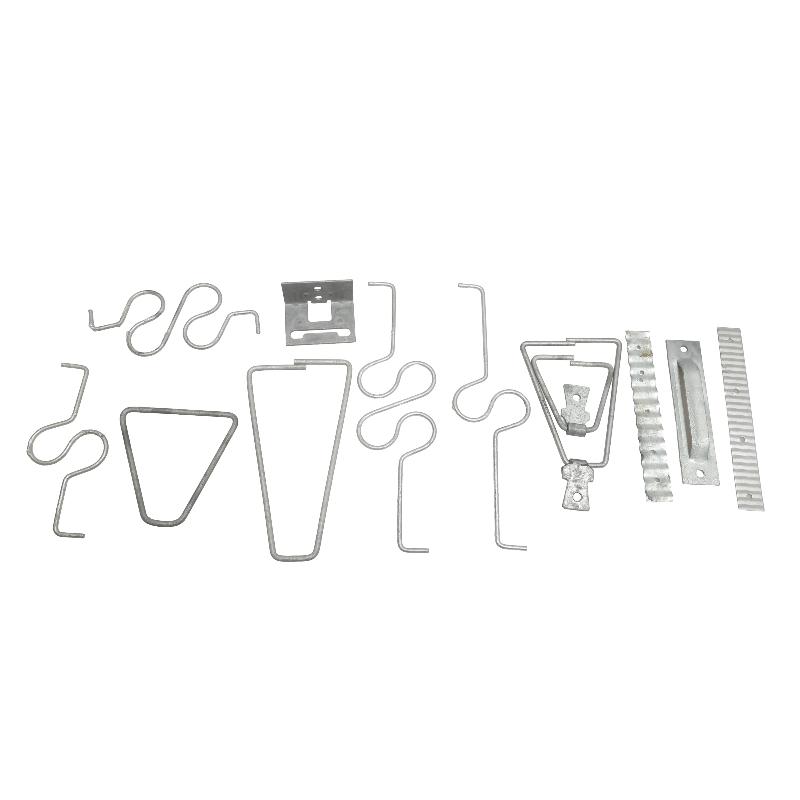
- Mobile Phone
- +8613931874955
- sales@cntcmetal.com
Properties and Applications of Annealed Steel Wire in Various Industrial Uses and Manufacturing Processes
Annealed Steel Wire Properties, Applications, and Benefits
Annealed steel wire is a versatile material that finds extensive applications across various industries due to its excellent mechanical properties and performance characteristics. The process of annealing involves heating the steel wire to a specific temperature and then gradually cooling it, which alters the microstructure of the steel. This results in improved ductility, reduced hardness, and enhanced tensile strength. Understanding the properties, applications, and benefits of annealed steel wire can help in appreciating its significance in modern manufacturing.
One of the primary properties of annealed steel wire is its improved ductility. Ductility is the ability of a material to deform under tensile stress, which is crucial for applications where the wire needs to be bent or stretched without breaking. By reducing the hardness of the wire through the annealing process, manufacturers significantly increase its ductility. This quality makes it an ideal choice for applications such as electrical wiring, fasteners, and springs, where the wire must withstand considerable stress while maintaining its integrity.
Another noteworthy property of annealed steel wire is its enhanced tensile strength. Although the annealing process reduces hardness, it also allows for a better distribution of internal stress within the material, resulting in a wire that can better handle loads without permanent deformation. This characteristic is particularly beneficial in construction and manufacturing applications, where safety and reliability are paramount. Whether used in cables for heavy machinery or in the reinforcement of concrete structures, the strength of annealed steel wire provides essential support and stability.
annealed steel wire

In terms of applications, annealed steel wire is utilized in a myriad of industries. In the construction sector, it is commonly used for reinforcing concrete and in the fabrication of wire meshes. The flexibility and strength of annealed wire make it an ideal choice for creating reinforcement bars (rebar), which are essential for enhancing the structural integrity of buildings and infrastructure projects. Additionally, in the automotive industry, annealed steel wire is widely used in the manufacture of tires, springs, and other components where flexibility and strength are required.
The electrical industry also benefits from the use of annealed steel wire. Its excellent conductivity and formability make it suitable for producing electrical connections, wiring, and components where reliability is critical. The reduced brittleness of annealed wire ensures that it can be easily fabricated and installed without the risk of breakage during handling.
Moreover, the benefits of using annealed steel wire extend to cost-effectiveness. The annealing process not only enhances the performance characteristics of the steel but also allows for more efficient manufacturing techniques. As the wire can be easily manipulated and shaped, this can lead to reduced waste and lower overall production costs. Consequently, industries can achieve significant savings while maintaining high-quality standards.
In conclusion, annealed steel wire is a valuable material characterized by its improved ductility, enhanced tensile strength, and wide range of applications. Its significant role in industries such as construction, automotive, and electrical demonstrates its versatility and importance in everyday life. With its cost-effectiveness and performance traits, annealed steel wire continues to be a preferred choice for manufacturers looking to achieve excellence in their products. Understanding the properties and benefits of this material can aid in making informed decisions in various industrial applications.
share:
-
The Ultimate Solution for Display Needs: Wire Grid PanelsNewsMay.06,2025
-
The Ultimate Guide to Galvanized Steel WireNewsMay.06,2025
-
Iron Binding Wire: The Ideal Solution for Your NeedsNewsMay.06,2025
-
Explore the Strength and Versatility of Galvanized Welded Wire FabricNewsMay.06,2025
-
Discover the Durability and Versatility of PVC Galvanized WireNewsMay.06,2025
-
Discover Quality China Stainless Steel Wire MeshNewsMay.06,2025
-
Understanding Wall Ties: Types and ImportanceNewsApr.28,2025



















